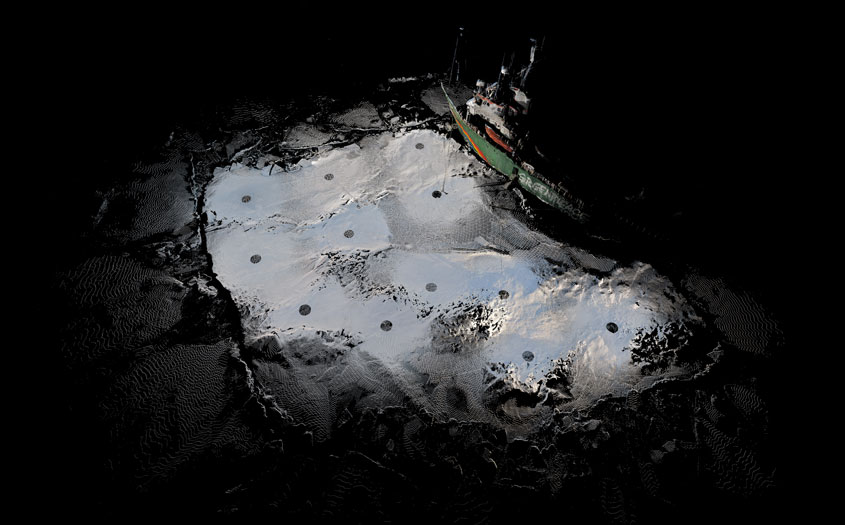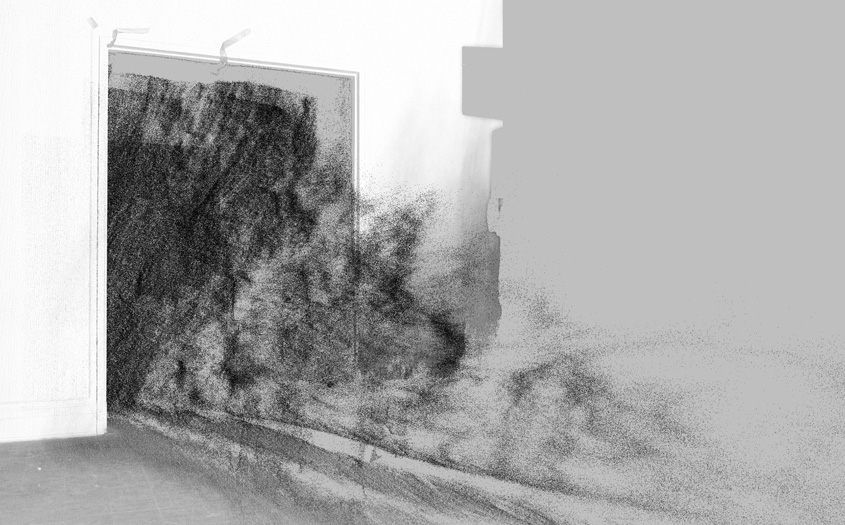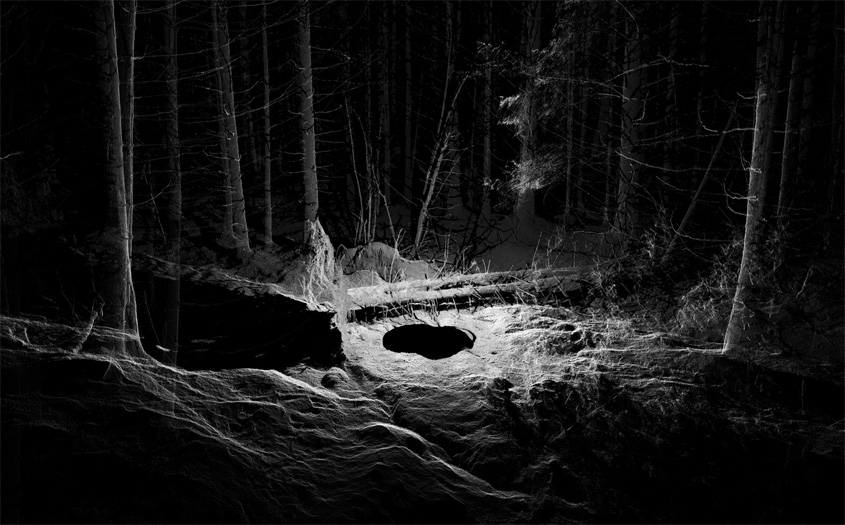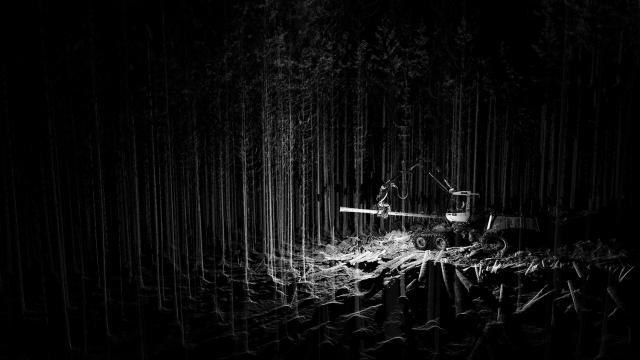3D scanners can clone architecture, objects, and even your own face. But what about the natural world? What would happen if you trained a scanner on a misty night or a dense forest?
Matthew Shaw and William Trossell, a pair of British architects who specialise in generating 3D data, are finding out. Shaw and Trossell work under the name ScanLAB, and though many of their projects deal with architecture, they’re also experimenting with scanning the natural world.
In 2011, the pair travelled to the Arctic to help Greenpeace to document ice floes breaking up along the edge of Svalbard, generating a slew of incredibly beautiful (and precise) models of the melting ice. They’ve also scanned weather events, like mist, smoke and humidity. More recently, they documented heavy machinery in the process of deforestation. As BLDGBLOG’s Geoff Manaugh explains, the data Shaw and Trossell generate is somewhere between image, model, and film — making it a powerful medium for documenting natural phenomena:
Whether scanning mist and humidity or travelling north to the Arctic to shoot lasers at pressure ridges and melting ice floes, their work is almost a kind of documentary holography: not a film, not a photograph, not a 3D model, but also not simply a point-cloud, their work operates almost narratively as they capture objects or places in the process of becoming something else, blurred by passing fog or pulled apart by unseen ocean currents. You could write a screenplay for scanners.
Apparently, ScanLAB is pushing even further into “documentary holography” later this summer, when they’ll host a scanning workshop dedicated to post-industrial landscapes in Canada. We’ve heard quite a bit recently about how 3D scanning is changing how we preserve the built world — but it’s changing how we think about the natural one too.

An image of an ice floe captured next to a Greenpeace ship, via ScanLAB.

A scan of smoke moving through a doorway, via ScanLAB.


Slow Becoming Delightful, Trossell’s thesis project, included scans of mist generated from humidity tanks. Via ScanLAB.
[BLDGBLOG]
